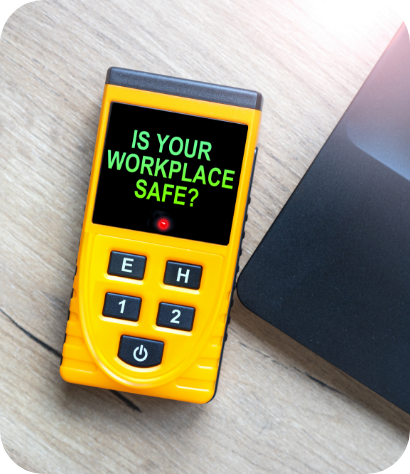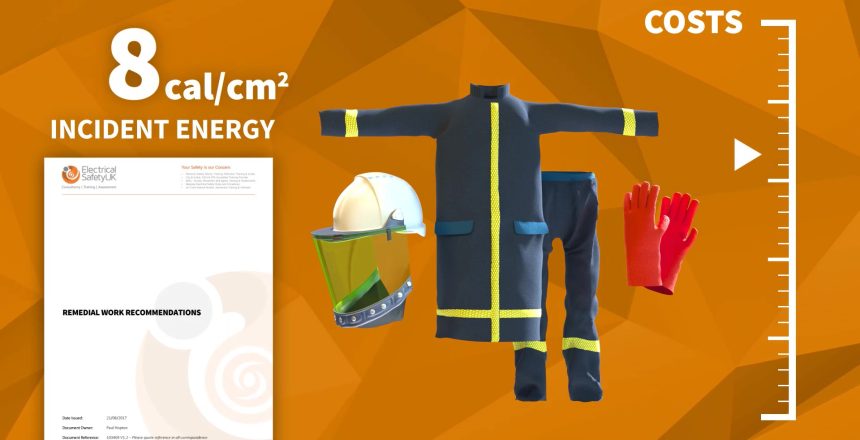Identify Electrical Safety Hazards
You cannot smell, hear, or see electricity, so making sure you have the right systems in place to manage this hazardous energy is critical to the wellbeing of your employees and your Company.
There are two major hazards of electricity:
- Electric Shock
- Arc Flash
Electrical safety is important because hazards such as arc flash and shock can result in death if you are exposed to them. Fortunately, the likelihood of this occurring is relatively low. However, the control measures that prevent these hazards require careful management, attention to detail and technical competence.
Injuries that can result from electric shock are as follows:
- Cardiac arrest due to the electrical effect on the heart
- Muscle, nerve, and tissue destruction from a current passing through the body
- Thermal burns from contact with the electrical source
- Falling or injury after contact with electricity
Injuries that can result from Arc Flash are as follows:
- Burns from the high temperatures produced by the arc
- Blindness from the ultra-violet light produced by the arc
- Hearing loss caused by the pressure wave from the arc blast
Comply with Electrical Safety Legislation
Not surprisingly there is legislation in place that aims to regulate these hazards.
The three main ones are:


- Health and Safety at Work – Primary piece of legislation covering occupational health and safety in Great Britain. It sets out the general duties which:
- employers have towards employees and members of the public
- employees have to themselves and to each other certain self-employed have towards themselves and others
- The Electricity at Work Regulations – Expand on the rules regarding electrical safety in teh Health and Safety at Work Act 1974. Employers are given duties and resonsibilites to make sure that all work activity that uses or may be affected by electricity is done safely, and that all foreseeable risks are assessed and minimised as much as possible.
- Management of Health & Safety at Work Regulations 1999 – Employers are required to undertake an assessment of the risks to the health and safety of their employees and other people who may be affected by their work activity.
Managing Electrical Risk is Important
We will now try to answer the question: What should you have in place to manage electrical risk?
In a nutshell, it is important have an Electrical Safety Management System in place. What does that consist of, you may ask? It depends upon the size of your organisation, but let us assume you are a large company, you should have something like the following in place:
1. Electrical Safety Rules – including training, compliance, and auditing.
2. Electrical Safety Instructions typically these may cover subjects such as:
3. Electrical Permit System – typically:
4. Electrical Authorisation System – You should have different levels of authorisation for electrical personnel that limits what work they can do. You may have several different levels of authorisation such as:
![]()
![]()
![]()
![]()
![]()
![]()
![]()
![]()
![]()
![]()
![]()
![]()
![]()
![]()
![]()
![]()
![]()
![]()
![]()
![]()
![]()
![]()
![]()
![]()
![]()
![]()
![]()
![]()
![]()
![]()
![]()
![]()
![]()
![]()
![]()
![]()
![]()
![]()
![]()
![]()
![]()
![]()
![]()
![]()
![]()
![]()
![]()
![]()
![]()
![]()
![]()
![]()
![]()
![]()
![]()
![]()
![]()
![]()
![]()
![]()
![]()
![]()
![]()
![]()
![]()
![]()
Within each category there can also be different levels of authorisation dependent upon the competency required to undertake certain tasks.
1. Electrical Competency Management System:
This should describe how you manage electrical competence, from recruitment through to technical competence requirements for each electrical role within your organisation.
2. Organisational arrangements:
This should describe who is responsible for electrical safety and how your organisation is set up to manage electrical safety, including individual roles and responsibilities.
We have helped many Companies put their Electrical Safety arrangements in order. If you feel like you might need some help, contact us today.





